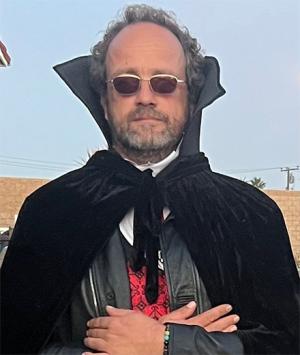Colloquium
Upcoming Colloquium
Resurrecting the Past: The Undying Relevance of 19th Century Physics for Stellar Corpses
Dr. Thomas Klaehn, CSU Long Beach
April 7, 2025
11:00am in HSCI-105

Before Newton published his Principia in 1687, laying the foundations of classical mechanics, Francis Bacon in 1620 pondered the nature of heat, stating: "Heat itself, its essence and quiddity is motion and nothing else." Boyle's law, which relates the change in pressure to a change in volume, was published in 1662. The industrial revolution of the late 18th century sparked a keen interest in understanding and quantifying thermodynamic processes, crucial for the efficiency of steam engines. The following 19th century saw the formulation of relationships between particle statistics and thermodynamics, leading to the development of statistical mechanics. Concepts such as entropy and thermodynamic potentials emerged during this time.
The 20th century brought a significant shift towards the newly formulated ideas of quantum mechanics and relativity, leading to rapid advancements and profound impacts on technology and society. The discovery of new particles throughout the century fostered the development of quantum field theory (QFT). Central to QFT are manifest symmetries of an underlying Lagrangian, which define the structure of theories like quantum chromodynamics and quantum electrodynamics.
Validating a quantum theory based on symmetry principles is a challenging process. It involves encoding these principles at the individual particle level, typically by modeling a Lagrangian or Hamiltonian, and then employing the full machinery of quantum (field) theory to relate these abstract entities to physical observables. In many-particle systems, this often requires approximations to be successful.

About the Colloquium
The Colloquium is a unique opportunity for students to learn about new developments in physics and what physicists do after they graduate. Hosted by the Physics and Astronomy Department at California State University, Long Beach, the weekly meetings invite guests from universities, research laboratories, and industry to present and discuss current topics in physics. All students are encouraged to attend for a well-rounded experience and training in physics.
Colloquium Coordinator
For information and suggestions about the colloquium please contact the colloquium coordinator:
Dr. Zoltan Papp
Zoltan.Papp@csulb.edu
Schedule
| Date | Title | Speaker and Affiliation |
|---|---|---|
| April 7, 2025 | Resurrecting the Past: The Undying Relevance of 19th Century Physics for Stellar Corpses | Dr. Thomas Klaehn, CSU Long Beach |
| April 14, 2025 | (topic: condensed matter experiment) | Cristopher Barty, UC Irvine |
| April 21, 2025 | (topic: condensed matter theory) | Kalman Varga, Vanderbilt |
| April 28, 2025 | (topic: condensed matter theory) | Thomas Baker, University of Victoria, Canada |
| May 5, 2025 | Physics Student Research Presentations | Physics Students, CSU Long Beach |
| May 7, 2025 | Physics Student Research Presentations | Physics Students, CSU Long Beach |
Previous Colloquia
| Date | Title | Speaker and Affiliation |
|---|---|---|
| March 24, 2025 | Design and construction of a Nitrogen-Vacancy mediated Optical Detection Magnetic Resonance (NV-ODMR) Spectrometer -- aka, a high-density Quantum Sensor Platform | Dr. Karoly Holczer, UCLA |
| March 10, 2025 | Topological semimetals in heavy fermion compounds | Dr. Silke Paschen, Vienna University |
| March 3, 2025 | Illuminating the Dark Sector | Dr. Daniel Diaz, UC San Diego |
| February 24, 2025 | Nontrivial band-topology in dimerized quantum magnets | Dr. Judit Romhanyi, UC Irvine |
| February 17, 2025 | Advances in Hadron Physics from Color-Confining Light-Front Holography: A Novel Nonperturbative Approach to Color Confinement, Hadron Spectroscopy, and Dynamics | Dr. Stanley Brodsky, Stanford University |
| February 10, 2025 | An Overview of AI and Machine Learning Research at the Nevada National Security Sites | Dr. Arnulfo Gonzalez, National Nuclear Security Site, Las Vegas |
| January 27, 2025 | Femtosecond Laser Eye Surgery: The Journey from Discovery to Commercial Products | Dr. Tibor Juhasz, UC Irvine |
| February 3, 2025 | Who’s Afraid of Quantum Interference? | Dr. Matthew Leifer, Chapman University |
The Colloquium Archive has the Colloquia from previous semesters.
Sponsors
We acknowledge with gratitude donations and support from the following present sponsors:
- H.E. and H.B. Miller and Family Endowment
- Benjamin Carter
- American Physical Society
- Anonymous
We also acknowledge with gratitude our past donors: The Forty-Niner Shops, Inc., The Northrop Grumman Foundation, Sandra Dana, Anonymous.
If you wish to support the Colloquium, please contact the colloquium coordinator or the department chair. Thank you!





